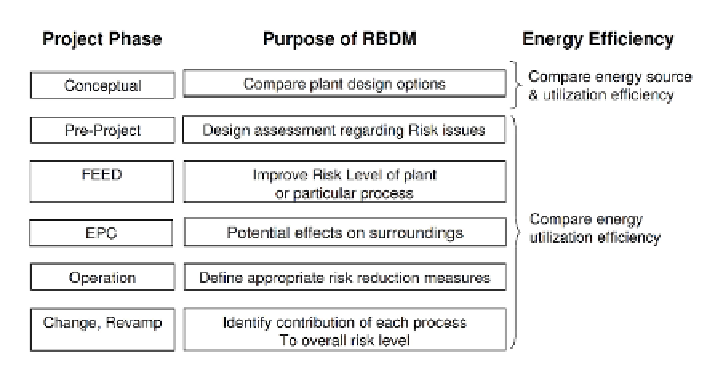Environmental Engineering Reference
In-Depth Information
Fig. 15.6.
Purpose of RBDM in each Project Phase
15.7 Role of Legislation and Directives
Many EU countries have legislation that makes RBDM a mandatory process in
projects involving use of hydrocarbons and other dangerous chemicals. Some
governmental agencies, which are given mandates to determine the acceptable risk
level, have also adopted the ALARP principles. Thus to a certain extent, legal sys-
tems are also involved and help to ensure a fair, unilateral implementation of
RBDM methodology. Risk management can also be seen as an investment for sus-
tainable development. Bodies like the UK's Health and Safety Executive (HSE)
and NORSOK of Norway have established Directives to facilitate and enhance the
application of RBDM process. Unfortunately, countries involved in most of the
import and export of Oil and Gas, like USA, Russia, China and India do not have
a formal and mandatory legislation in place to address RBDM process. This can
be seen as a barrier to successful implementation of the RBDM process and inclu-
sion of energy efficiency goals, as proposed in this paper. Establishing good en-
ergy policies should follow energy risk management strategies as well. Here en-
ergy risk management refers to a different context from that which is discussed
with respect to the RBDM process in this paper.
15.8 Case Study 1: CAPEX Project
As mentioned earlier, one of the possible methods of improving energy efficiency
in the oil and gas industry is replacing an existing energy source with a new, effi-
cient and cleaner source. The example cited here is a Capex project undertaken to
replace LPG fuels with LNG. Natural Gas reserves are larger than the oil reserves,
from which petroleum gas is usually obtained, and the need for cleaner energy has

Search WWH ::

Custom Search